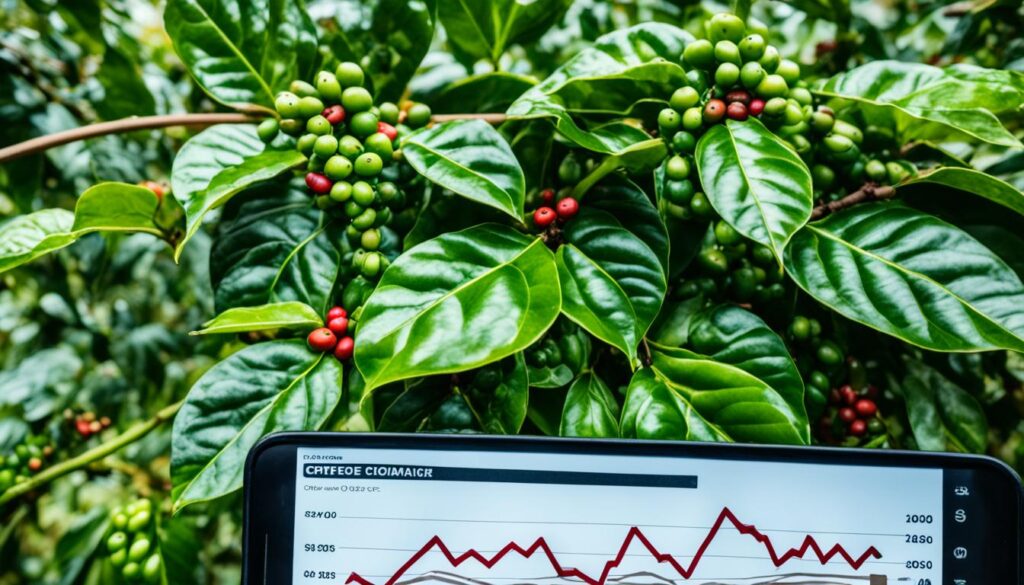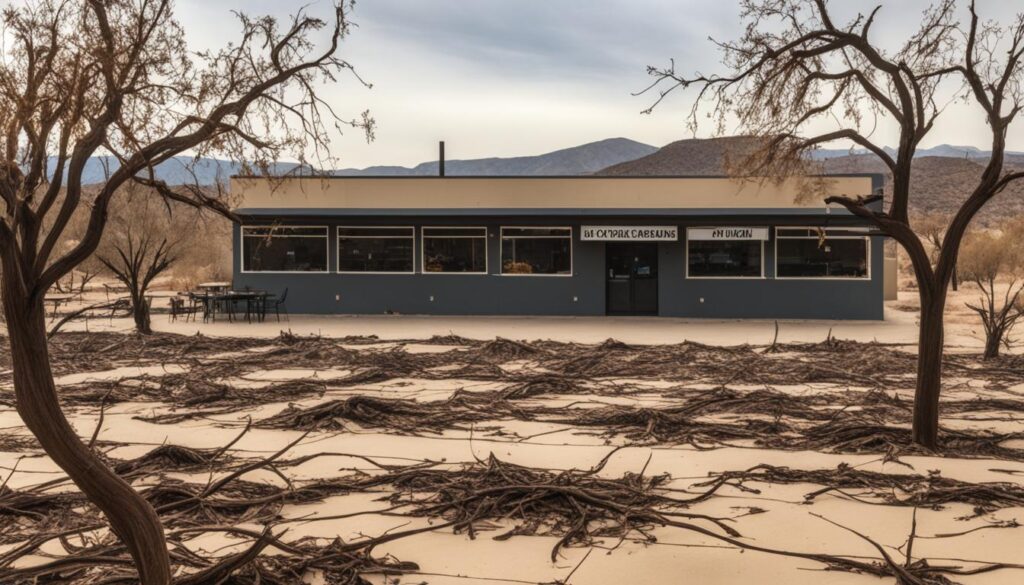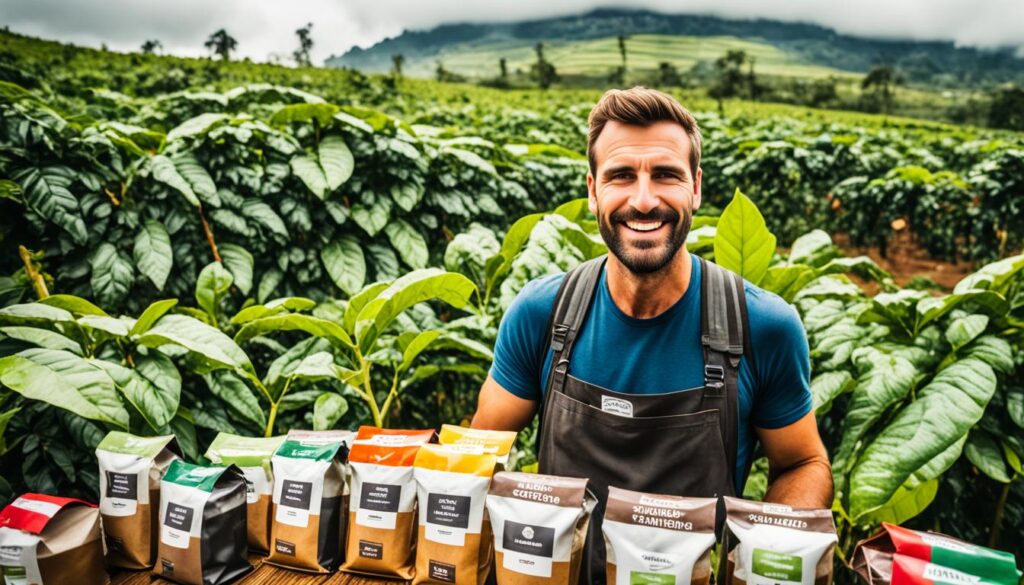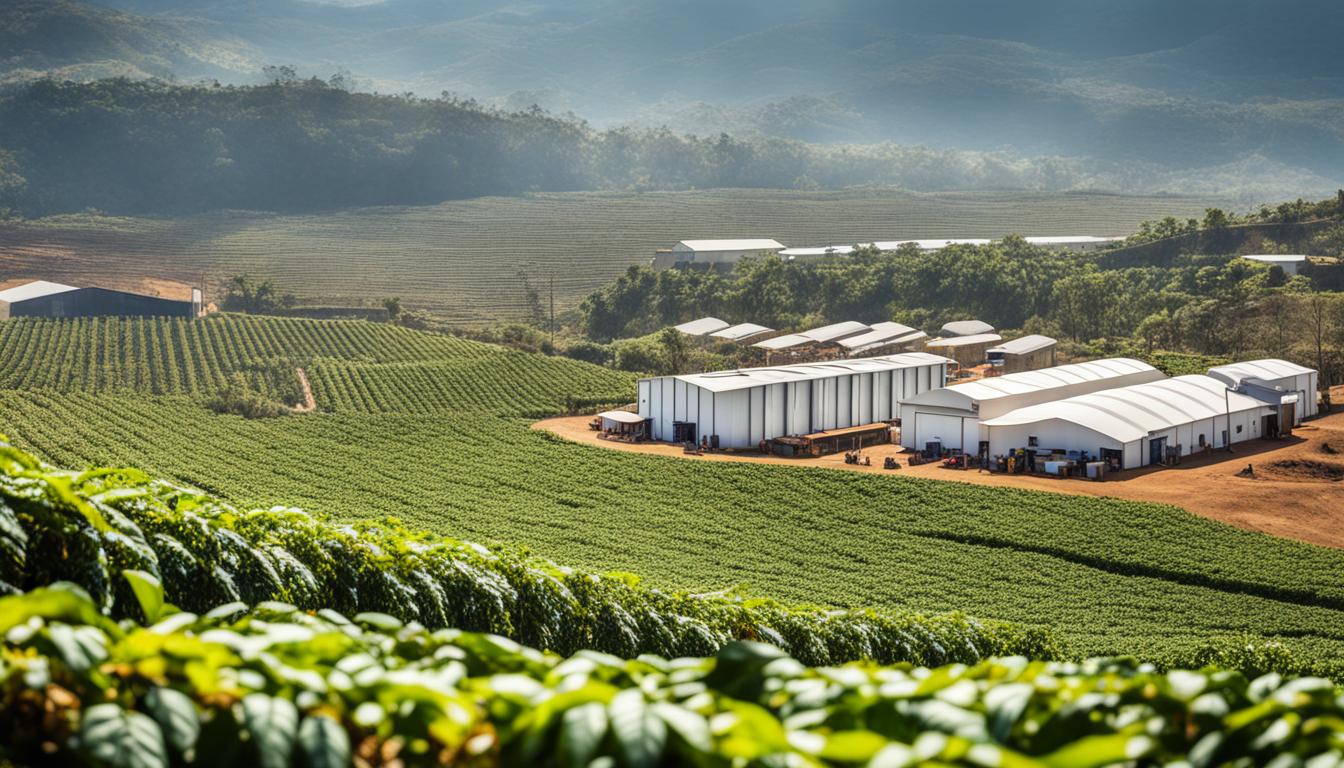Were you aware that Robusta coffee futures have recently reached a record high? Prices have soared to an impressive $3,849 per ton. This is not just a temporary increase; it indicates a significant shift in the coffee market. The spike is attributed to poor harvests and an increasing number of new coffee consumers.
Countries like Brazil and Vietnam are facing tough weather that’s hurting their coffee crops. Vietnam might see a 20% drop in output. Brazil’s crops might get damaged because of too much rain. Since the U.S. spent about $8.2 billion on coffee imports in 2023, these issues are big. They make us wonder about the future of coffee prices and if we’ll easily find coffee on the shelves.
Specialty coffee is getting more popular, especially in Asia. This popularity, mixed with supply problems, makes things complicated. These issues matter a lot. They affect everyone who loves their daily coffee and the farmers who grow it. This section looks into how these challenges and new consumer trends are changing coffee prices and availability.
Key Takeaways
- Robusta coffee futures recently reached an all-time high, signaling rising coffee prices.
- Weather-related poor harvests in Brazil and Vietnam are leading to reduced coffee availability.
- The U.S. imported approximately $8.2 billion worth of coffee in 2023, reflecting strong consumer demand.
- The surge in specialty coffee consumption is contributing to increased competition for coffee resources.
- New consumer trends, particularly in emerging markets, are influencing coffee market dynamics.
Understanding Current Coffee Price Trends
The coffee market is influenced by many factors that shape its price trends. Supply and demand, along with global trade conditions, are key in setting prices. Changes in consumer habits, weather, and politics also affect coffee prices.
Factors Influencing Coffee Prices
Several key factors impact global coffee prices:
- Weather Events: Droughts and cold spells, especially in Brazil, which makes up 40% of the world’s coffee exports, could lead to a 25.7% drop in production this season.
- Logistics Constraints: The Covid-19 pandemic has led to huge challenges in the supply chain and distribution.
- Speculation: The C market’s dependence on futures contracts can cause prices to swing, based on how traders feel.
- Rising Costs: Inflation has made coffee shops hike their prices. Higher shipping fees and wages are to blame.
Historical Price Fluctuations due to Harvests
History shows that changes in coffee harvests can cause big shifts in prices. For example, from 2021 to 2022, ground coffee prices in the US jumped by 20%. This was mainly because the closing price of arabica coffee reached $2.58 per pound, its highest since 2011. The International Coffee Organization predicts a shortage of 7.3 million bags in the 2022/2023 harvest, pushing prices up. Roasters are struggling to keep prices stable, sometimes passing the higher costs to customers.

Climate Change and Its Effects on Coffee Production
Climate change deeply affects coffee production. Altered weather patterns harm crop yields. This makes it hard for farmers to predict outcomes and manage their crops.
Impact of Weather on Crop Yields
Climate change brings extreme weather that hits farmers hard. In places like Vietnam, severe droughts reduce water for crops. Meanwhile, in Brazil, too much rain harms coffee plants. This decreases how much coffee we get.
Studies find that nearly half of the world’s coffee comes from areas. These areas might lose over 60% of their coffee-growing land by 2050. This will make coffee scarcer and more expensive, worrying everyone who loves their daily cup.
Long-term Implications for Farmers
Farmers have to change how they farm to keep up. They might lose much of their land good for coffee. Experts suggest a few ideas to help:
- Move coffee crops to higher ground for better climate conditions
- Use agroforestry techniques to keep soil in good shape
- Try making new types of coffee plants that can handle tough conditions better
We need to act fast to help farmers with these challenges. Teaching them about sustainable farming is crucial. Government support is also essential. Plus, the coffee industry must work together for the planet. Only then can we save our beloved coffee for the future.

The impact of on poor harvests and new consumers on coffee prices
The coffee industry is fighting a tough battle. Poor harvests and a spike in demand are big issues. New markets like China and South Korea are now loving coffee. This has helped brands like Nescafe and Lavazza sell more.
This change means we see big ups and downs in coffee prices. It’s an interesting time for the market.
Emerging Markets and Increased Demand
Rapid growth in some countries is pushing up demand for coffee. It’s becoming a must-have drink in these places. That’s making the need for more coffee even stronger.
Prices have hit new highs, reaching $3 a pound for the first time in decades. The July arabica contract in New York got to $3.025 per pound. That’s the highest it’s been since 1977.
This mix of new buyers and old producers is going to change how coffee is priced. It’s something to watch closely.
Shifts in Consumer Preferences
As coffee becomes more popular, tea is taking a back seat. In Britain, a bag of ground coffee now costs more than it did last year. Instant coffee prices have gone up too.
Supermarket prices for coffee are rising. This shows how the market and what people want are changing. With the lowest coffee stocks in 50 years, keeping up with demand is a real worry.

Geopolitical Factors Affecting Coffee Supply
Geopolitical factors now heavily influence the global coffee supply. This includes both how much coffee is produced and its trade. The crisis in Ukraine, for example, has caused significant disruptions. It impacts trade routes and coffee bean availability. Tensions in the Red Sea region add to these challenges. They lead to market uncertainty and possible price increases that could affect everyone involved.
Effects of Global Conflicts on Trade
Global conflicts greatly affect coffee supply chains. Political unrest in coffee-producing areas can stop goods from moving. This makes it hard for farmers to sell their coffee. With coffee demand rising, this causes fierce competition for the available supply. As people continue to want their coffee, these issues make the market tough to navigate.
The Role of Price Speculators in the Market
Price speculation is key in the coffee market’s ups and downs. Speculators’ reactions to global events can cause rapid price changes. Coffee futures are traded on places like the Intercontinental Exchange. Here, prices can shift due to weather, politics, and global economics. This speculation adds to the coffee supply chain’s challenges. It brings uncertainty from the source to the retail price for consumers.









